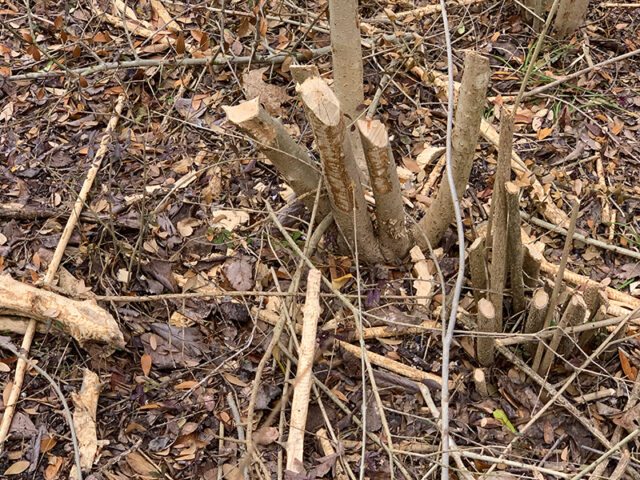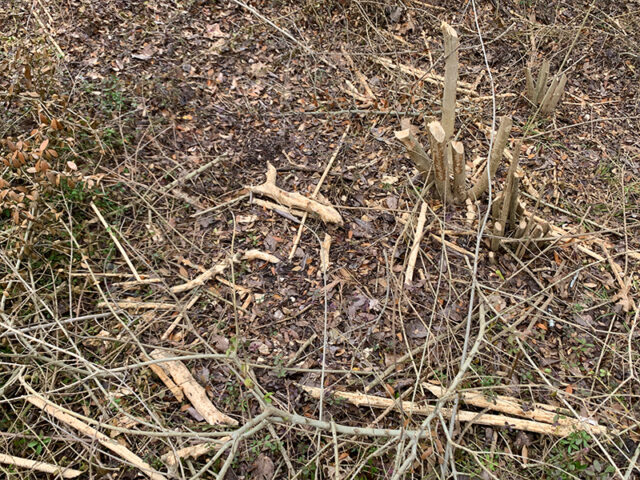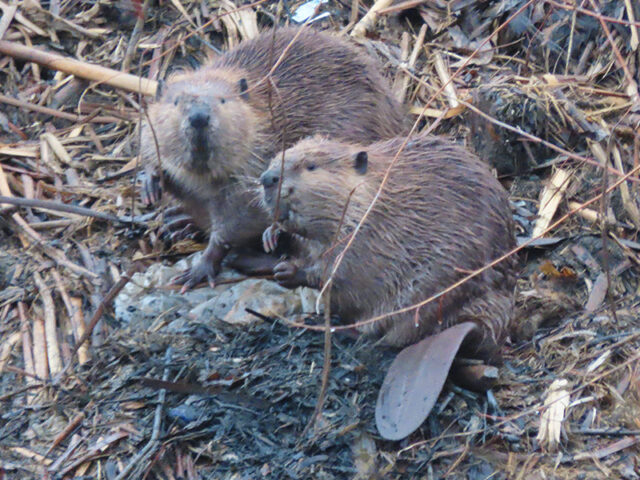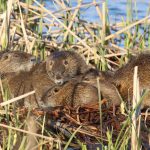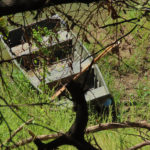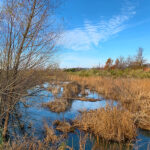Dateline – January 29, 2021 – Lewisville, Texas
Many decades ago a narrow channel was cut leading from an area of low ground and running several hundreds yards until it finally intersected with the Trinity River. When the ditch was dug all those years ago, its purpose was to drain pond water overflow safely away into the river. It still serves that function today.
Over time the channel has largely been forgotten. It is no longer maintained, and in the interim a dense riparian forest has grown up around it on land that was once likely agrarian. In this young remote forest you can now find nearly ever type of woodland creature you might expect to live in North Texas—including the American Beaver.
This is not typical Beaver habitat however. There is not a pond, or a burrow, or a lodge here. But, if you keep a careful look out, you can still find evidence that Beavers are present and active. Case in point are the Chinese Privet stumps illustrated in the photographs below.

Beavers in North Texas typically feed on green aquatic vegetation such a Pickerel Weed. Food resources like these simply don’t exist along most of this channel’s length. Instead, the Beavers in this part of the woods were hauling themselves out of the water in order to dine on woody Chinese Privet.
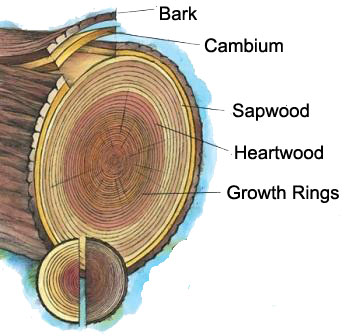
The Beavers were using the water-filled channel to enter the forest in relative safety. Once a suitable site was reached the Beavers would exit the water and begin cutting privet branches just above ground level. Once felled, the Beavers would cut each shoot into a more manageable length before consuming the edible parts of each.
Privet branches are made up of wood covered with a layer of bark. The wood is structural, and the bark is protective. Between the two is a layer known as the cambium, which supports growth and the vascular system. This is the part of the branch where important nutrients are found, and this is the part that the Beavers consumed.
Feedings sites were littered with short sections of bare wood branches stripped completely of their bark and cambium. We found frequent evidence of this type of sign as we made our way along the old drainage ditch. Every dozen yards or so revealed fresh Beaver sign.



